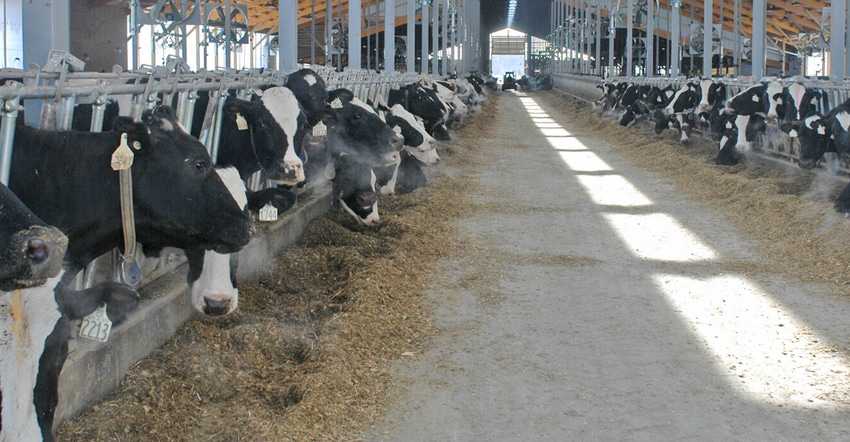
Bob Cropp, University of Wisconsin-Madison dairy economist, says milk prices will climb to $17 by October after dipping in July.
The July Class III price fell 99 cents from June to $15.45, but is expected to increase about a dollar to $16.45 by the end of August. The price is expected to climb into the $17s in September and October, according to Cropp.
“Slower growth in milk production, good domestic sales of butter and cheese, and higher dairy exports strengthen dairy product prices, which pushed milk prices higher in August,” he explains.
CME 40-pound cheddar blocks were as high as $1.78 per pound in early August before dropping to $1.66. By late August, the price had climbed back to $1.75 and will average higher for the month of August than the July average of $1.65.
CME butter averaged $2.61 per pound in July and was $2.73 in early August, but then softened some and hit $2.64 by late August. Stronger cheese prices more than offset lower dry whey prices, giving the boost to the August Class III price.
USDA estimated July milk production to be 1.8% higher than a year ago.
“This marks the third straight month the increase has been less than 2%, which is supportive of higher milk prices,” Cropp notes.
Strong exports
U.S. dairy exports in the first half of the year were the highest in three years due to record exports of nonfat dry milk/skim milk powder and whey products, and a 24% year-to-date increase in cheese exports. June exports compared to a year ago were as follows: nonfat dry milk/skim milk powder up 7%, cheese up 32% and butterfat up 254%, but total whey exports were 10% lower. On a total solids basis, June exports were equivalent to 14.4% of milk production and 14.3% for the year-to-date compared to 13.1% a year ago, according to Cropp.
“Improved exports have been aided by an increase in world demand and much-improved world prices that are now higher than U.S. prices,” he says.
Butter prices have held due to lower production, good sales and higher exports. In June, butter production was 4.8% lower than a year ago and 1.7% lower year to date. As a result, stocks of butter declined from May to June and were 5.5% lower than the previous year, Cropp notes.
“Seasonal improvement in butter and cheese sales, along with expected continued improvement in exports, should add further strength to the Class III price for September and October, reaching into the $17s,” he says.
Compared to a year ago, the increase in milk production is considerably lower in the Northeast and Midwest, with mixed changes in the West. Compared to July a year ago, Northeast milk production was slightly lower in New York, Pennsylvania and Ohio, with Michigan up just 2.9%. In the Midwest, July milk production was 4.2% higher in South Dakota, up 2.1% in Iowa, up 3.1% in Minnesota, and just 0.7% higher in Wisconsin. In the West, California continues to experience lower milk production, with July down slightly at 0.2%.
USDA has lowered its forecast for 2017 milk production for each of the past five monthly forecasts due to an expected lower increase in milk per cow, reducing the impact of more cows. USDA is forecasting an average of 0.8% more cows but just a 0.7% increase in milk per cow, resulting in 2017 milk production 1.6% higher than last year. Wet weather has dominated both the Northeast and Midwest, with the exception of South Dakota, which has experienced a drought; therefore, harvesting quality hay has been hampered, which could impact milk per cow in these two major milk-producing regions.
About the Author(s)
You May Also Like






